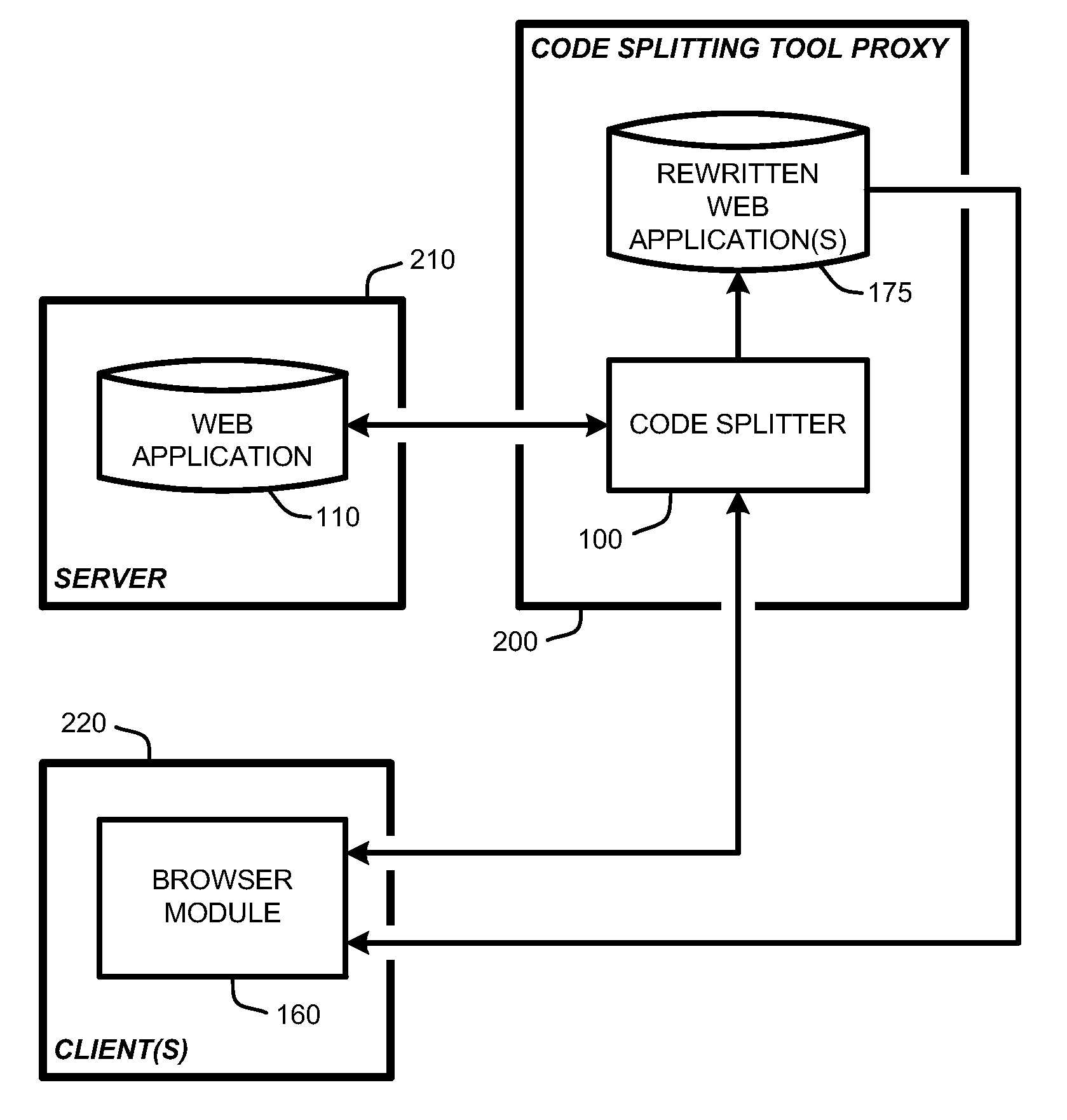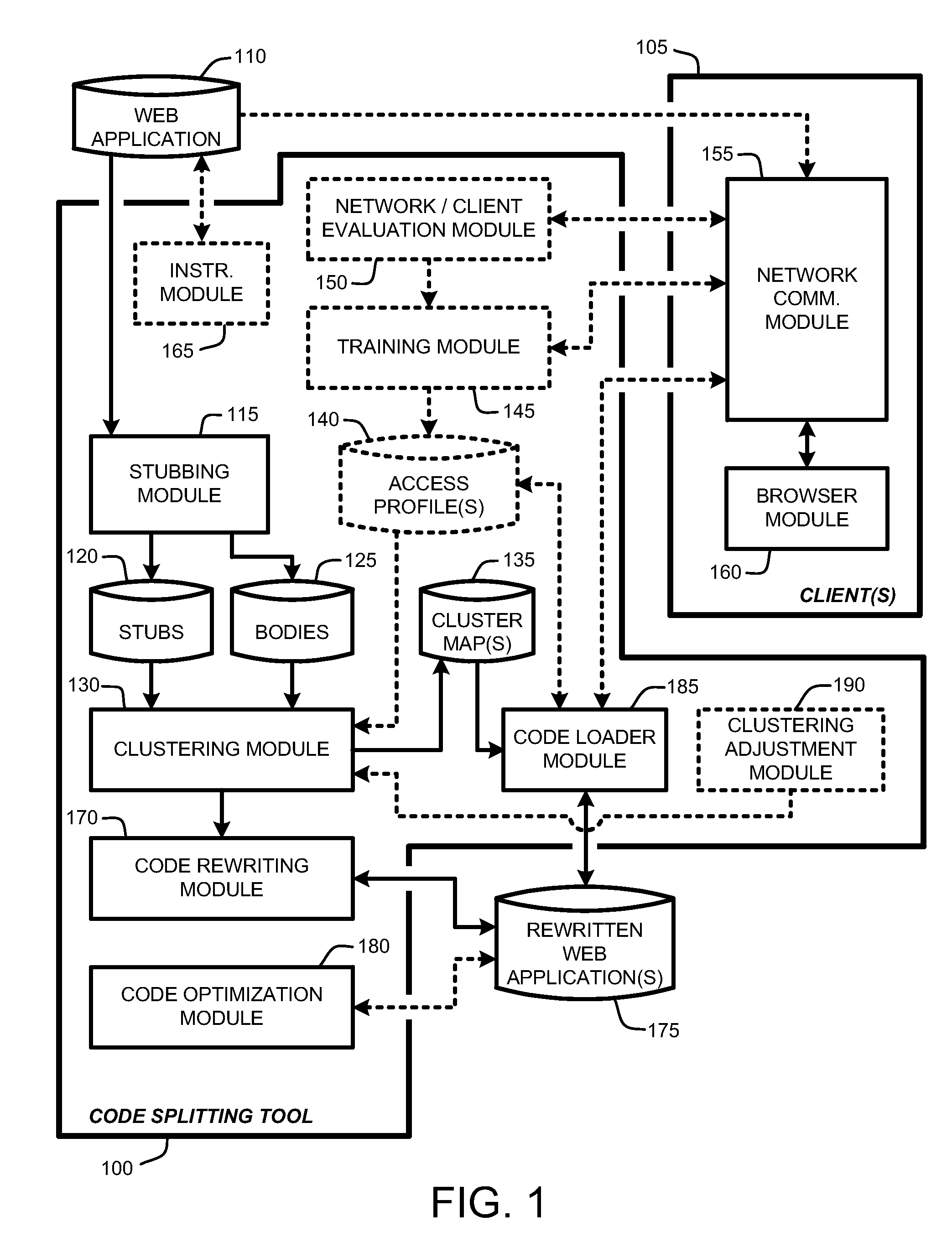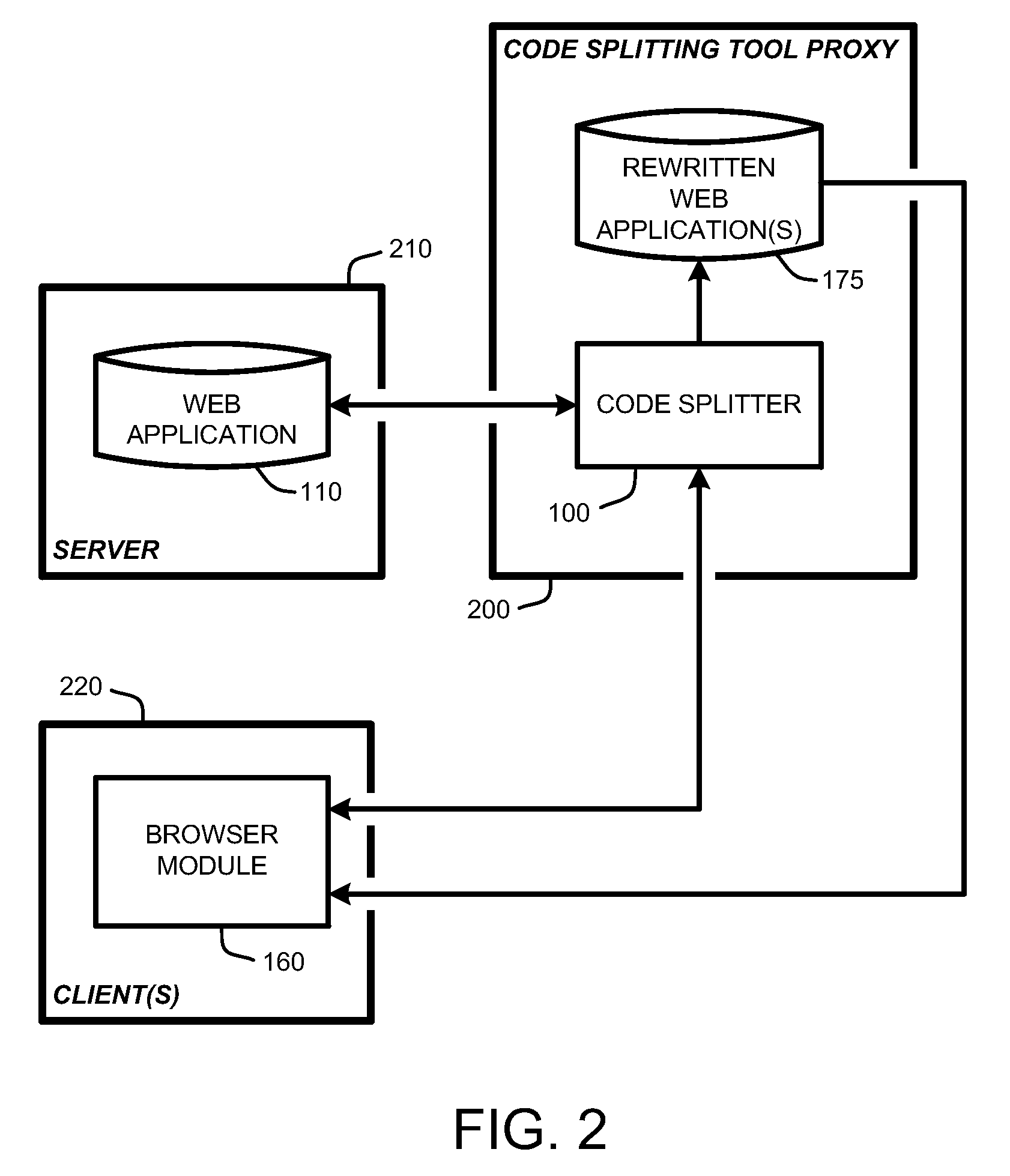Automated code splitting and pre-fetching for improving responsiveness of browser-based applications
a browser-based application and automatic code splitting technology, applied in the field of code splitting, can solve the problems of increasing the amount of code that must be downloaded, degrading reducing the initial download size, so as to improve the perceived responsiveness of the application, improve the effect of code optimization, and reduce the initial download siz
- Summary
- Abstract
- Description
- Claims
- Application Information
AI Technical Summary
Benefits of technology
Problems solved by technology
Method used
Image
Examples
Embodiment Construction
[0021]In the following description of the embodiments of the claimed subject matter, reference is made to the accompanying drawings, which form a part hereof, and in which is shown by way of illustration specific embodiments in which the claimed subject matter may be practiced. It should be understood that other embodiments may be utilized and structural changes may be made without departing from the scope of the presently claimed subject matter.
[0022]1.0 Introduction:
[0023]Web applications are typically executed within browser type applications on PC-type computers, handheld devices such as PDA's or cell phones, or other computing devices. In general, a “code splitting tool,” as described herein, provides various techniques for automatically analyzing and rewriting existing distributed network applications (sometimes referred to as “Web” or “Web 2.0” applications) to introduce dynamic code loading into those applications. In other words, the code splitting tool provides a deploymen...
PUM
 Login to View More
Login to View More Abstract
Description
Claims
Application Information
 Login to View More
Login to View More - R&D
- Intellectual Property
- Life Sciences
- Materials
- Tech Scout
- Unparalleled Data Quality
- Higher Quality Content
- 60% Fewer Hallucinations
Browse by: Latest US Patents, China's latest patents, Technical Efficacy Thesaurus, Application Domain, Technology Topic, Popular Technical Reports.
© 2025 PatSnap. All rights reserved.Legal|Privacy policy|Modern Slavery Act Transparency Statement|Sitemap|About US| Contact US: help@patsnap.com



